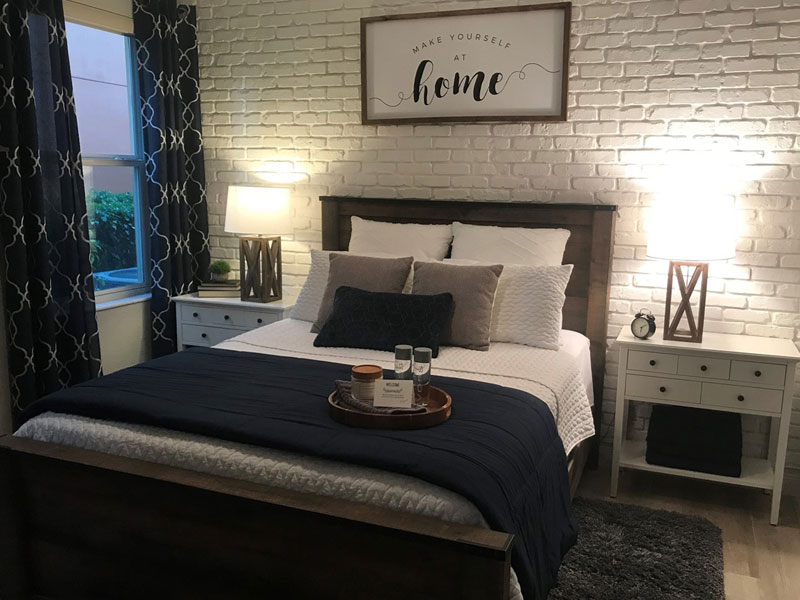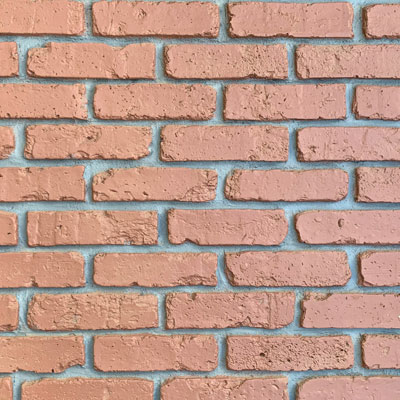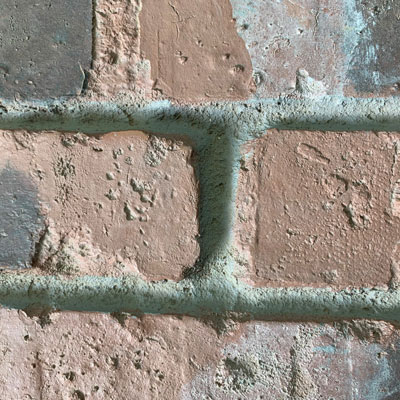Faux Brick – What Is It and How to Install?
Written by Milan Jara on 2nd Nov 2021

Faux brick is an excellent building material to give your home an exposed brick look without exposed brick prices. In this article, we explain the appeal of faux brick over real brick and give you a guide to installing faux brick yourself.
What is Faux Brick?
As the name implies, faux brick is a fake brick material meant to mimic the appearance and appeal of real brick but not the structural integrity. In other words, it’s an aesthetic addition rather than a building material.
Faux brick is manufactured in a variety of ways with a variety of different materials. Commonly, it is made with high-density polyurethane or similar materials and combined to make it look like real brick.
The quality of faux brick varies widely across manufacturers and product categories. Some faux brick uses pieces of real brick, and some use synthetic materials, and some are a combination thereof. It’s also possible to buy faux brick panels, which are pre-assembled “layers” of faux brick to be directly affixed to a surface. Panels are much easier to install, but we’ll cover both types of assembly below.
Why Faux Brick?

The primary reason to turn to faux brick is price and ease of use. Faux brick is much more affordable because it uses materials that are light and easy to handle. Since it is meant to be decorative, it doesn’t need to use heavyweight materials.
Faux brick is also shaped and contoured to be used as a decorative accent, not as a foundational tool. For example, it is much thinner than real brick as it is only meant as an exterior layer. In the case of faux brick panelling, the entire layer of brick comes pre-assembled.
Faux Brick Drawbacks
The most obvious drawback of faux brick is that, unlike real brick, it is not intended for structural purposes. Faux brick’s construction and lightweight nature mean it lacks the structural integrity to be used as a building material and is really just intended as a stylistic material.
How to Install Faux Brick
As was briefly mentioned above, there are two main types of faux brick you will likely work with. The first type is individual pieces of faux brick, which you need to install piece-by-piece, and will also require grouting between each piece to mimic the cement look. The second type is faux brick panelling. We’ll cover each process next.
How to Install Faux Brick Pieces
What You’ll Need:
- Level
- Wet saw
- Measuring tape
- Screw gun
- Table saw
- Trowel
- Mastic
- Wood
- Mortar
- Grout (cement)
- Grout bag
- Faux brick
Clean Veneer Surface
Before you begin, you need to clean the wall (or faux brick surface) of any dust or debris that may interfere with the attachment process. You don’t need to sand the wall unless the wall is covered in oil-based paint.
Flat Base
Installing faux brick requires a flat, level base. First, take a level to your floor. If your floor isn’t level, you’ll need to attach a piece of scrap wood to the base of your installation surface to use as a guide. Use your level to straighten the piece of wood, and you’ll use it as your guide to begin the installation of your faux brick.
Cut Faux Bricks
Use your table saw to cut several faux bricks in half, then use these bricks to stagger the edges of the pattern and eliminate vertical seams running through your faux brick installation. It’s easier to cut several bricks at once than come back to your saw over and over, but make sure you don’t cut more than you need.
Create Grout Joint
As you’re placing bricks, leave space between the bricks for grouting. This space should be equidistant for all bricks. To do this, we recommend you make grout joints from scrap wood. Each joint will be the same width (we recommend ½”) and placed between bricks to ensure an equal distance between rows.
Begin Installation
It’s time to start affixing your faux bricks to the wall. Start in the bottom corner of your surface and work your way across and up. Here’s how to do it:
- Cover the bottom corner of your surface with mastic using your trowel.
- Press a full faux brick into the mastic on the bottom corner of your wall. Place a half brick directly above this brick, staggering between half and full as you go up (to eliminate vertical seams). You can use your grout joints to ensure equal separation. Use your level to make sure the first brick in each row is level.
- Go back to the bottom level, and start filling in full rows, leaving equal space between each brick. Work your way up until your entire section of mastic is complete, checking with your level as you go.
Repeat
Once you’ve completed your first section of mastic, apply a layer directly above and keep going. Repeat this process until you have covered your entire surface. Remember, keep checking your project with your level and by stepping back to get the big picture.
Grouting
Once you affix the bricks to the wall, you need to let them dry for at least one day, but preferably 2. Then, it’s time to fill in the gaps with grout to give them that authentic look. Use a grout bag to squeeze cement through the cracks of all your bricks, levelling and cleaning the cement as you go. Allow the cement to dry, and you’re done!
How to Install Faux Brick Panels
Faux brick panels come in pre-assembled panels (obviously), making them much easier to install, eliminating many of the steps above, which involved separating the bricks and installing piece-by-piece. That said, it’s still a precise process that requires individual attention. Here’s how to do it:
What You’ll Need:
- Faux brick panelling
- Wet saw/table saw
- Level
- Measuring tape
- Adhesive
- Nail gun and screws
Measure and Cut

Before you can begin installing your panelling, you need to measure the application area. Remember to account for any adjustments you might need to the panelling (outlets, doors, fireplace, etc.).
Based on these measurements, you need to cut your faux brick panelling to size. Make your markings on the panels, and use a table saw to make your cuts. Remember to cut holes for outlets.
Attach Panels
First, make sure your attachment surface is clean by wiping it clean of any dust or debris. You don’t need to sand the surface unless it is covered in oil-based paint.
Attaching the panels won’t be difficult as long as you have pre-cut them to proper specifications. Apply several lines of construction adhesive to your walls, and place the panels into place. Then, you’re going to use your nail gun to secure the panels in place. Put nails in each corner and a few along the side and middle of the panel. We recommend 8-10 nails per panel, but it will change depending on the panel’s size – use common sense.
Clean
Once you install the panels, clean your work area, and you’re done! As you can see, faux brick panels are a much easier installation process than faux brick pieces.
Panels vs. Pieces – Which Should I Choose?
If you’re having trouble deciding whether to purchase faux brick panels or faux brick pieces, we’ll give a mini-guide. There are a few notable advantages and disadvantages of each.
Faux brick pieces, if installed correctly, hold a clear advantage in terms of aesthetics. Real grouting, combined with the distinct look of each brick, gives an individual look that you can't replicate with faux brick panelling. It’s difficult to distinguish from a real brick wall, even up close.
That said, faux brick pieces are also more expensive than panelling. Additionally, faux brick pieces require a much more extensive and precise installation process than faux brick panels.
While faux brick panels might struggle to replicate real bricks to the same degree as faux brick pieces, they aren’t a slouch either. Quality faux brick panelling is surprisingly convincing, especially when viewed at a distance.
Choose Faux Brick Pieces If:
- You want a more convincing faux brick aesthetic.
- You don’t mind the additional work and precision required of installation.
Choose Faux Brick Panels If:
- You want an easier installation process.
- You want to save money.
Don’t Be Afraid to Contact a Professional!
This article has covered the installation process for faux brick and faux brick panelling. It’s not the most difficult installation, but it does require precision and patience. If you’re feeling overwhelmed, don’t hesitate to contact a professional to handle the installation. An experienced professional will ensure that your job is done correctly and accurately the first time – not to mention saving you plenty of time!
Conclusion
Thanks for reading our comprehensive guide to faux brick. Faux brick is a fantastic way to give your living space a timeless look. Use our guide to install your faux brick the right way.